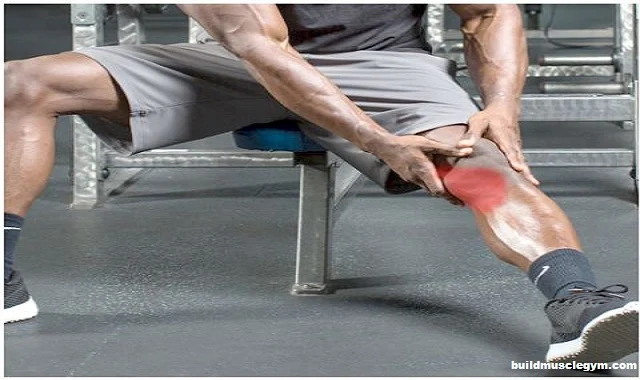 |
| 4 Possible Reasons Pain Behind the Knee |
4 POSSIBLE REASONS FOR PAIN BEHIND THE KNEE:
1. HAMSTRING TENDONITIS
If you start feeling stiffness or mild pain behind the knee when you start running, but eventually it subsides, then it’s very likely you have hamstring tendonitis. This condition usually appears in runners that run longer distances and are often participating in marathons or half-marathons and in the end don’t receive enough flexion in their hips due to improper running technique and accumulated fatigue.
When running, the hamstrings fatigue and are unable to slow down your feet when they are accelerating. As the same motion is repeated you will soon start experiencing pain behind the knee. This overuse happens when your lower leg goes too far forward in a pendulum-like swing, putting too much strain on your hamstrings repeatedly while running.
How to fix it: you should consult with a sports specialist that will manage to pinpoint the exact cause of the pain by performing an analysis of the way you walk. The analysis will help find the exact muscles that don’t activate properly and give a broad picture of the running technique and style. Very often, weak gluteus muscles are the main cause for experiencing pain behind the knee, however making your pelvic stabilizers and your hip flexors stronger can also be beneficial. You can try the so-called “clam opener” movement, which is an oft-used treatment for this type of pain. Lie on the back, bend your knees and put a resistance band loop around the knees. Then open the legs by pushing against the resistance band. Do 3 sets of 20 reps.
2. BAKER’S CYST
It’s very likely you have Baker’s cyst if you feel a swelling in the form of a lump behind the knee, as you bend and straighten the leg. It feels like touching a water balloon. Because runners do the same movement over and over again, too much of it without too introducing variations in distance or speed can be the cause of excessive friction between the cartilages surrounding the knee, resulting in an irritation of the soft issues within as well as the posterior surface of the knee cap.
How to fix it: The repetitive bending and straightening of the legs which is the basis of running often lead to fluid accumulation, resulting in a cyst appearing behind the knee. Even though taking some time off of running is a good idea, the best fix for this condition is getting an injection or aspirating the cyst in order to take out the accumulated fluid. A special type of manual therapy is also suggested or the implementation of active release techniques, which are all basically types of massage. These can break up the scarred muscle tissue in the hamstrings and help alleviate the problem by making the symptoms subside. However, the cyst can reappear if you have a tear in the meniscus or arthritis.
3. TORN MENISCUS
The meniscus is a cartilage in the form of a horseshoe situated between the upper and lower leg bone. It can get torn due to a sudden fall or knee twist or a simple wear and tear. The meniscus keeps the knee stable, but as we age it gets worn down. A minor tear can result in a small swelling which will improve over the course of 2-3 weeks. A moderate-level tear is painful when bending the knee. Even though the pain can subside after a couple of weeks, overuse can cause it to get re-injured. A severe tear will make walking extremely difficult. The knee might start to “wobble”, or it can all of a sudden become stiff and stop moving.
How to fix it: An MRI scan can give a precise indication of how severe the injury is. Also, icing the injury and resting can help tremendously with a torn meniscus. The doctor may even suggest a physical therapy consisting of specific movements which you’ll need to do on a daily basis, like exercising the quadriceps in order to strengthen the joint and the previously mentioned clam openers. If these don’t alleviate the pain and there is still swelling, then surgery is the best solution to repair or remove the cartilage. Post-surgery treatment may require you to use crutches for several miles, but in the end, it’s well worth the effort.
4. GASTROCNEMIUS TENDONITIS
This is basically your calf muscle which forms the back of your lower leg and goes behind your knee and attaches above the joint. The tendons tend to receive a lot of strain when the knee is extended and the toes are pointing upward, which in turn pulls on the tendons. This condition is much more present in cyclists in comparison to runners because of improper fit or some other fatigued muscle in the body. If the bike seat is positioned too high or it is too far back, the calves will be in a vulnerable position. They can be put on a lot of strain if the gluteus muscles aren’t properly doing their job, like with uphill riding, running or climbing.
How to fix it: First thing is that you rest properly, ice the painful spot and massage it to decrease the swelling. You can also try a calf sleeve which will compress the spot while running. The right sleeve will offer good support to the painful area and decrease the strain while the muscle continues to heal itself. In the case of bike riding, you can also get yourself a professional bike fit.
Read More: exercises that will help you get them